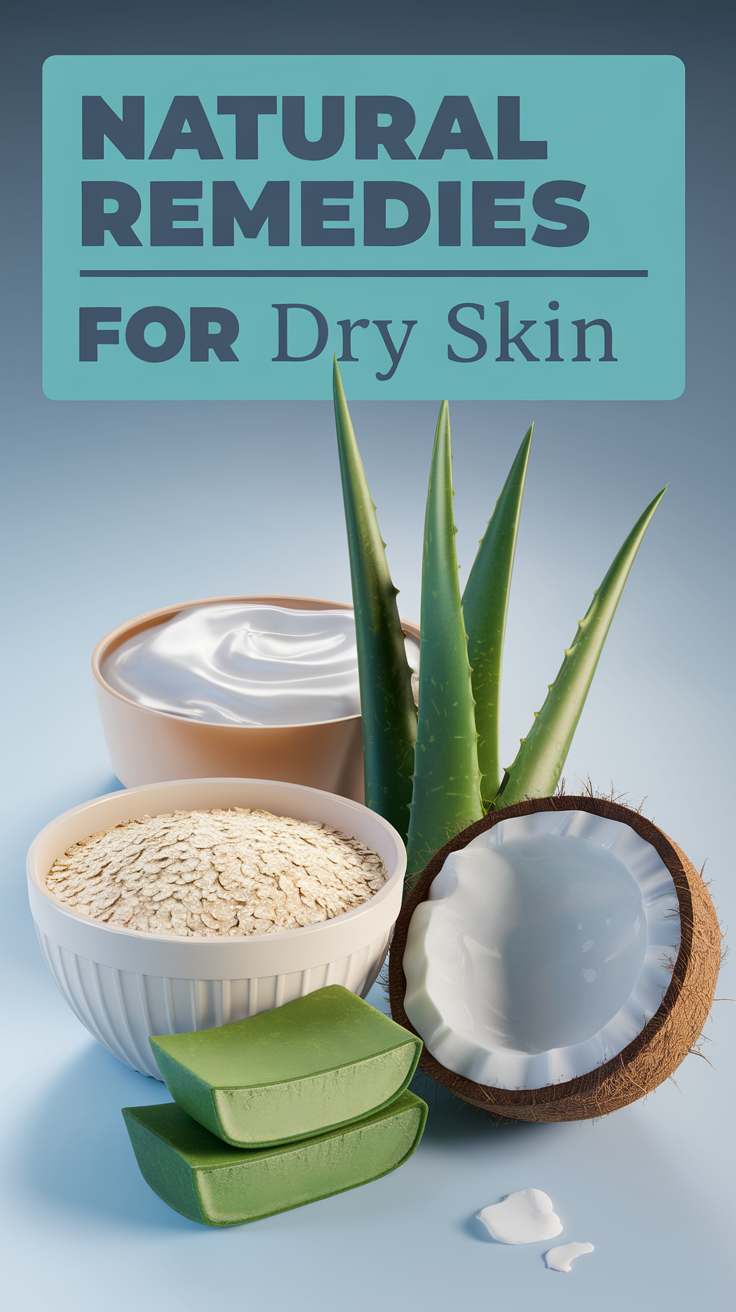How to Get Rid of Dry Skin After Winter
As winter fades, many of us struggle with dry, flaky, and irritated skin caused by the harsh cold, low humidity, and indoor heating. I’ve faced this issue myself and found solutions that genuinely work. Let’s explore how you can revive your skin’s hydration and health with practical steps, expert tips, and natural remedies.
Why Winter Causes Dry Skin
Winter brings several challenges for your skin:
- Low Humidity: Cold air holds less moisture, leaving skin parched.
- Indoor Heating: Dries out the air, stripping moisture from your skin.
- Hot Showers: Though comforting, they can damage the skin’s natural barrier.
Your skin loses its natural oils during winter, leading to flakiness, redness, and irritation. Addressing these issues requires a combination of skincare routines, lifestyle adjustments, and natural remedies.

Rehydrate and Revitalize: Your Step-by-Step Plan
1. Adjust Your Cleansing Routine
- Use gentle, fragrance-free cleansers that retain your skin’s natural oils.
- Wash with lukewarm water to avoid further dryness.
| Recommended Cleansers | Key Benefits |
|---|---|
| Cetaphil Gentle Cleanser | Hydrates while cleansing |
| La Roche-Posay Toleriane Hydrating | Supports the skin’s natural barrier |
| Vanicream Gentle Facial Cleanser | Free from harsh chemicals and irritants |
Tip: Double cleanse if you wear makeup to ensure a clean, hydrated base.
2. Moisturize Effectively
- Apply moisturizer immediately after bathing to lock in hydration.
- Use products with hyaluronic acid, ceramides, or glycerin to deeply hydrate and repair the skin barrier.
- Consider overnight masks for an added boost.
| Ingredient | Benefit |
| Hyaluronic Acid | Retains up to 1000x its weight in water |
| Ceramides | Repairs the skin barrier |
| Glycerin | Attracts moisture to the skin |
 DIY Remedy: Mix shea butter, coconut oil, and vitamin E for a nourishing balm.
DIY Remedy: Mix shea butter, coconut oil, and vitamin E for a nourishing balm.
3. Use a Humidifier
Indoor heating dries the air, making your skin more prone to dehydration. Place a humidifier in your bedroom to keep moisture levels optimal overnight.
Tip: Aim for 40-60% humidity for the best results.
4. Hydrate from Within
Hydration isn’t just topical—it starts from within:
- Drink at least 8 glasses of water daily.
- Incorporate foods like cucumbers, watermelon, and leafy greens.
- Add omega-3-rich options like salmon, walnuts, and chia seeds.
DIY Recipe: Blend spinach, avocado, almond milk, and blueberries for a skin-boosting smoothie.
5. Protect Against UV Rays
UV rays harm your skin year-round. Use a broad-spectrum sunscreen with SPF 30 or higher, even on cloudy days.
Tip: Opt for sunscreens with moisturizing ingredients like vitamin E or aloe vera.
6. Gentle Exfoliation
- Exfoliate 1-2 times per week to remove dead skin cells and improve product absorption.
- Use chemical exfoliants like lactic acid or mandelic acid for mild yet effective results.
DIY Scrub: Mix ground oatmeal, honey, and yogurt for a soothing exfoliant.

7. Tailor Your Routine to Your Skin Type
- Oily Skin: Use gel-based moisturizers that hydrate without clogging pores.
- Sensitive Skin: Avoid fragrances and alcohol; choose calming ingredients like aloe vera.
- Aging Skin: Incorporate retinoids or peptides for added elasticity and hydration.
Natural Remedies for Dry Skin
DIY Masks
- Avocado and Honey Mask: Mash half an avocado with 1 tablespoon of honey. Apply for 20 minutes.
- Aloe Vera Gel: Use fresh aloe vera gel for instant soothing and hydration.
Oatmeal Baths
Add 1 cup of finely ground oatmeal to a warm bath. Its natural emollients help soothe and repair dry, itchy skin.
Seasonal Transition Tips
- Gradually switch to lighter moisturizers as the weather warms.
- Monitor for seasonal allergies that can irritate skin.
- Avoid prolonged sun exposure during early spring.
Product Recommendations
| Product Name | Best For |
| CeraVe Moisturizing Cream | Dry, sensitive skin |
| Neutrogena Hydro Boost Gel | Lightweight hydration |
| La Roche-Posay Lipikar Balm AP+ | Intense hydration for very dry skin |
| Aveeno Eczema Therapy Balm | Soothing irritation |
| Vanicream Moisturizing Cream | Gentle hydration for sensitive skin |
Conclusion
Revitalizing your skin after winter requires consistency and the right approach. By following this guide, you can restore hydration, repair your skin’s barrier, and achieve a radiant complexion. Remember to hydrate inside and out, and adjust your skincare routine to suit the changing seasons.
FAQs
1. How often should I moisturize post-winter?
You should moisturize at least twice daily, in the morning and evening. Apply moisturizer immediately after bathing to lock in moisture.
2. Can diet impact skin hydration?
Absolutely. Foods rich in omega-3 fatty acids and antioxidants promote skin health and hydration.
3. Is sunscreen necessary after winter?
Yes, UV rays can damage your skin year-round. Use a broad-spectrum sunscreen daily, even indoors if exposed to sunlight or blue light from screens.
4. What type of cleanser is best for dry skin?
Opt for gentle, fragrance-free cleansers that don’t strip your skin of natural oils. Avoid harsh soaps and hot water.
5. Are natural remedies effective for dry skin?
Yes, remedies like honey, oatmeal, and aloe vera can complement your routine by providing soothing and hydrating benefits.
6. When should I consult a dermatologist?
If dryness persists or you experience severe irritation, cracks, or bleeding, consult a dermatologist for professional advice.

